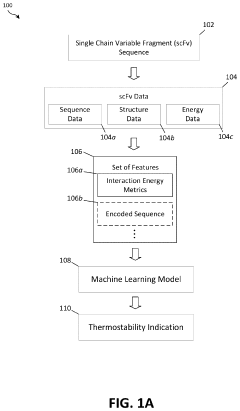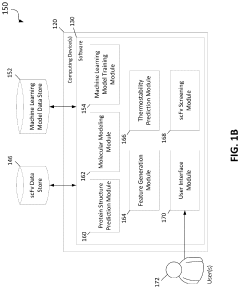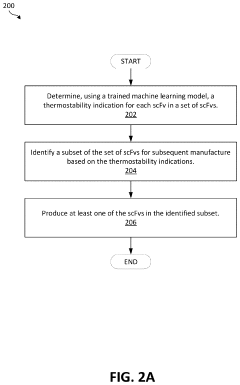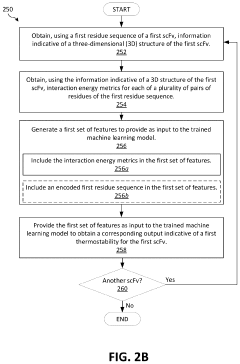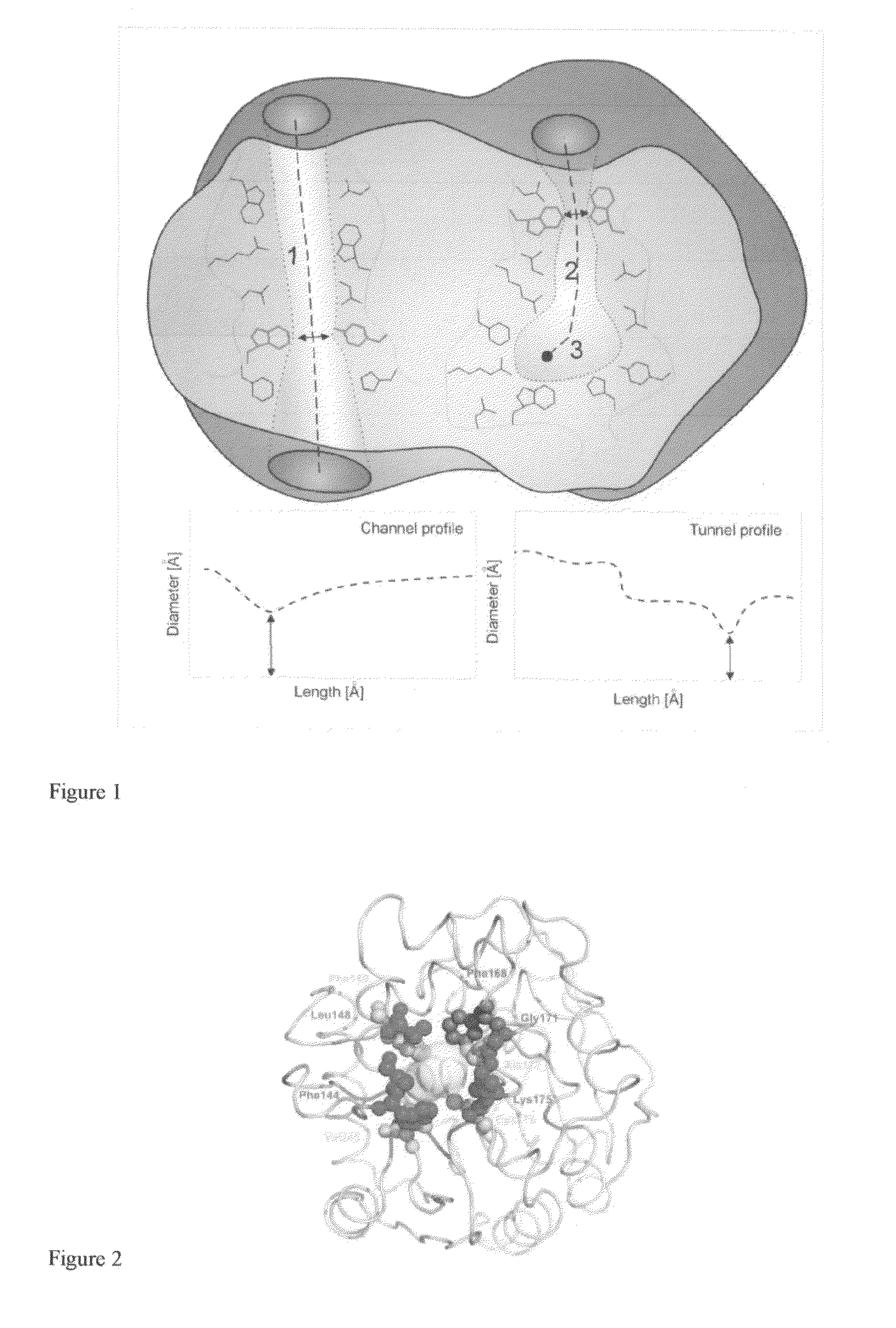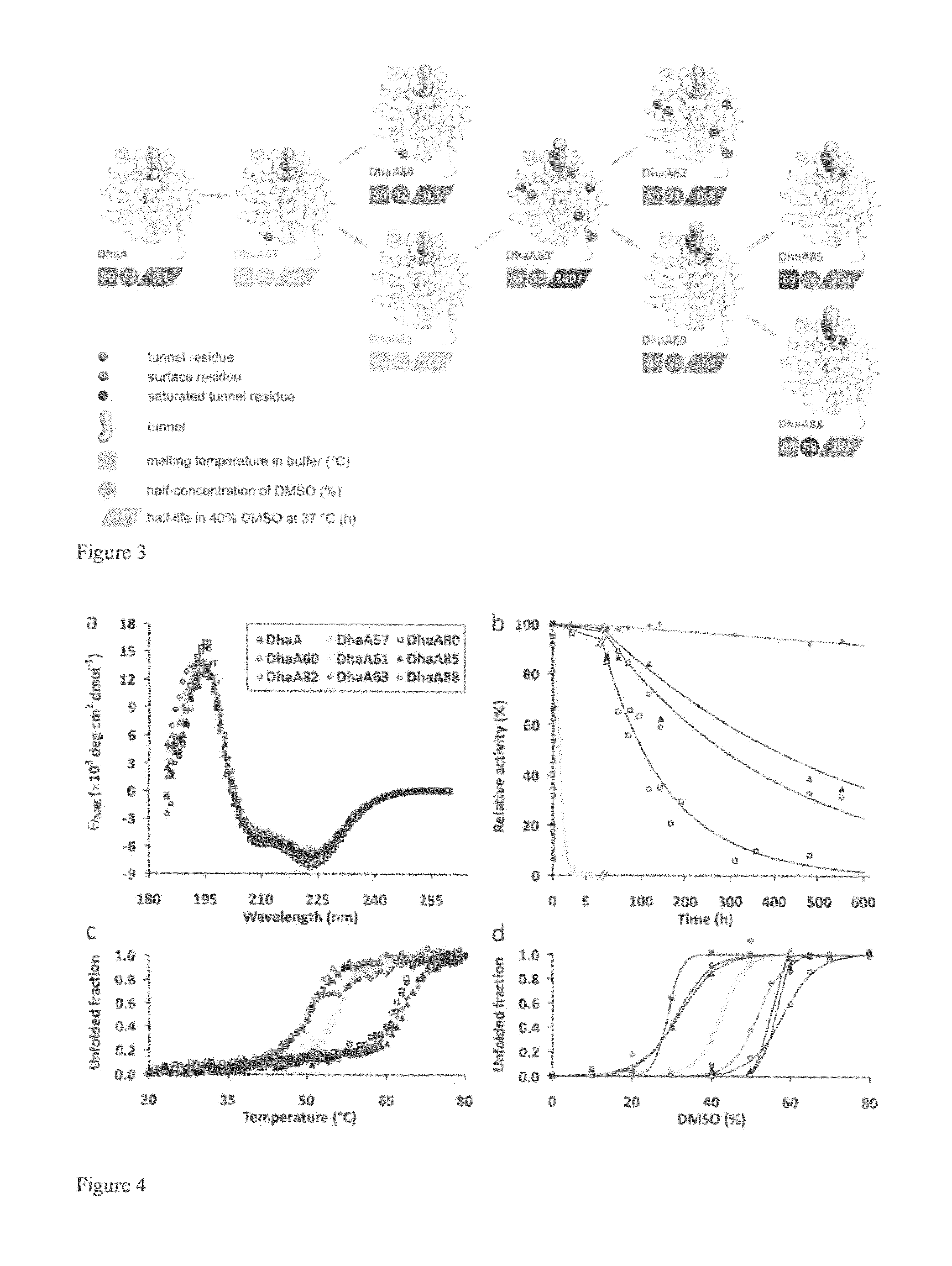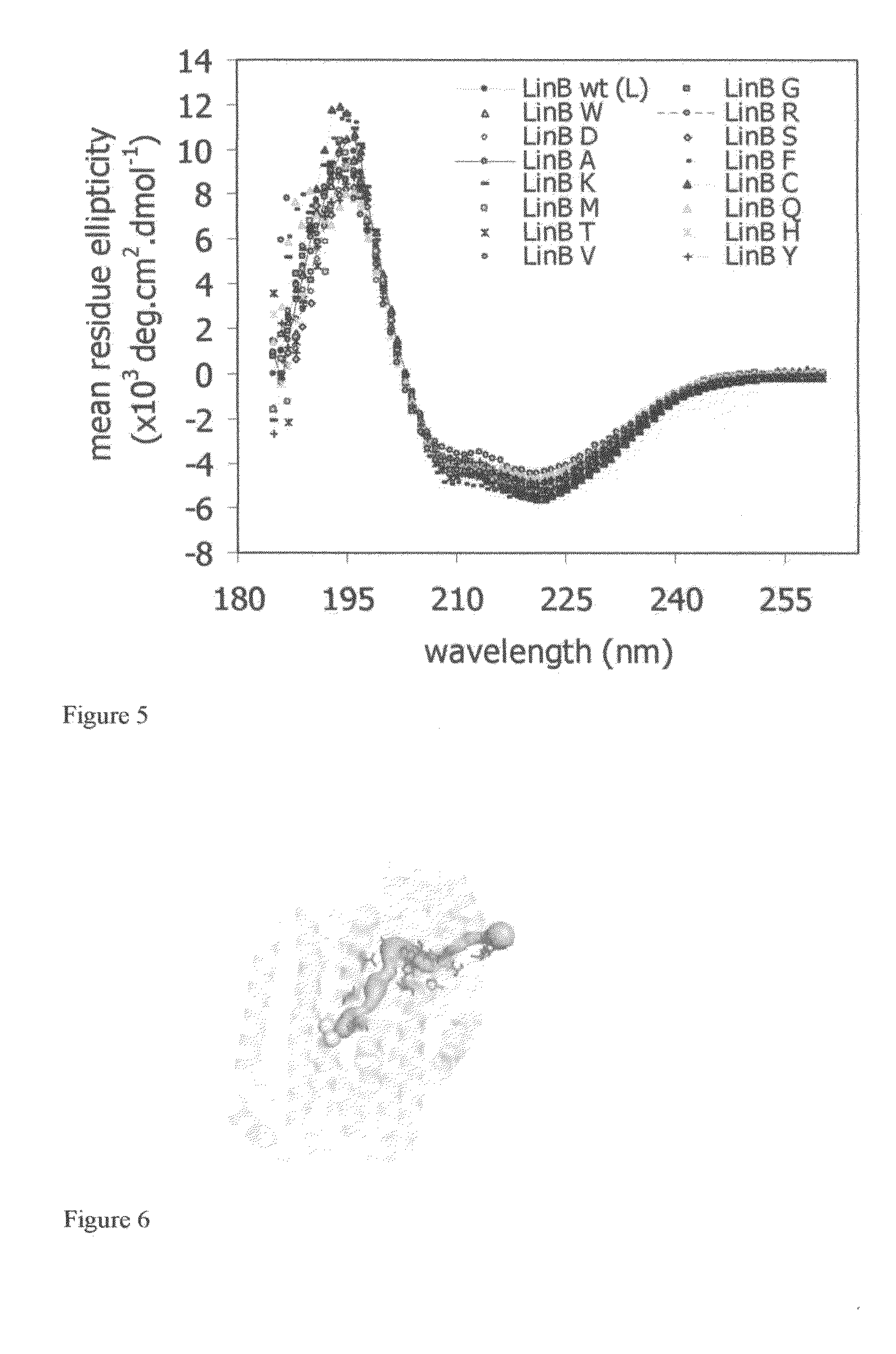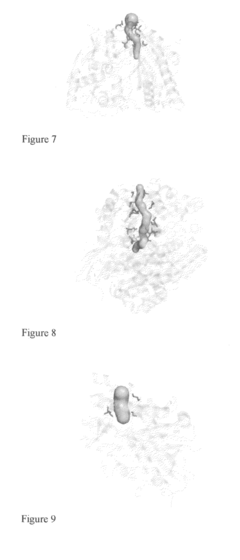Evaluate Thermal Stability Parameters in Photonic Neural Networks
OCT 1, 20259 MIN READ
Generate Your Research Report Instantly with AI Agent
Patsnap Eureka helps you evaluate technical feasibility & market potential.
Photonic Neural Networks Thermal Stability Background and Objectives
Photonic neural networks (PNNs) represent a revolutionary paradigm in computing technology, merging the principles of optical physics with neural network architectures. The evolution of this technology dates back to the early 2000s when researchers began exploring alternatives to electronic computing to overcome the limitations of Moore's Law. The integration of photonics into neural network design offers significant advantages in processing speed, energy efficiency, and bandwidth capacity compared to traditional electronic systems.
The thermal stability of photonic neural networks has emerged as a critical factor affecting their performance and reliability. Temperature fluctuations can significantly impact the refractive indices of optical materials, wavelength stability of light sources, and the overall precision of optical interference patterns that form the computational basis of these networks. Historical approaches to thermal management in photonic systems have primarily focused on passive cooling techniques and material selection with minimal temperature sensitivity.
Recent technological advancements have shifted focus toward active thermal management systems and the development of thermally resilient photonic materials. The integration of temperature compensation algorithms and feedback control mechanisms has shown promising results in laboratory settings, though challenges remain in scaling these solutions for commercial applications.
The primary objective of this technical research is to comprehensively evaluate the thermal stability parameters that influence photonic neural network performance across various operational conditions. This includes identifying critical thermal thresholds, quantifying performance degradation patterns under temperature stress, and establishing standardized metrics for thermal stability assessment.
Additionally, this research aims to explore innovative approaches to enhance thermal resilience in photonic neural networks, including advanced material engineering, novel architectural designs that incorporate thermal compensation mechanisms, and adaptive algorithms capable of adjusting to changing thermal conditions in real-time.
The long-term goal is to establish design principles and engineering guidelines that enable the development of photonic neural networks with predictable and reliable performance across a wide range of environmental conditions, from controlled data center environments to more challenging deployment scenarios with variable thermal profiles.
This research will contribute to the broader technological trajectory of photonic computing by addressing one of its fundamental challenges, potentially accelerating the transition of photonic neural networks from laboratory demonstrations to practical, commercially viable computing solutions that can complement or eventually replace conventional electronic systems in specific application domains.
The thermal stability of photonic neural networks has emerged as a critical factor affecting their performance and reliability. Temperature fluctuations can significantly impact the refractive indices of optical materials, wavelength stability of light sources, and the overall precision of optical interference patterns that form the computational basis of these networks. Historical approaches to thermal management in photonic systems have primarily focused on passive cooling techniques and material selection with minimal temperature sensitivity.
Recent technological advancements have shifted focus toward active thermal management systems and the development of thermally resilient photonic materials. The integration of temperature compensation algorithms and feedback control mechanisms has shown promising results in laboratory settings, though challenges remain in scaling these solutions for commercial applications.
The primary objective of this technical research is to comprehensively evaluate the thermal stability parameters that influence photonic neural network performance across various operational conditions. This includes identifying critical thermal thresholds, quantifying performance degradation patterns under temperature stress, and establishing standardized metrics for thermal stability assessment.
Additionally, this research aims to explore innovative approaches to enhance thermal resilience in photonic neural networks, including advanced material engineering, novel architectural designs that incorporate thermal compensation mechanisms, and adaptive algorithms capable of adjusting to changing thermal conditions in real-time.
The long-term goal is to establish design principles and engineering guidelines that enable the development of photonic neural networks with predictable and reliable performance across a wide range of environmental conditions, from controlled data center environments to more challenging deployment scenarios with variable thermal profiles.
This research will contribute to the broader technological trajectory of photonic computing by addressing one of its fundamental challenges, potentially accelerating the transition of photonic neural networks from laboratory demonstrations to practical, commercially viable computing solutions that can complement or eventually replace conventional electronic systems in specific application domains.
Market Analysis for Thermally Stable Photonic Computing
The photonic computing market is experiencing significant growth, driven by increasing demands for high-speed, energy-efficient computing solutions. Current market projections indicate that the global photonic computing market is expected to reach $3.8 billion by 2030, with a compound annual growth rate of approximately 32% from 2023 to 2030. This remarkable growth trajectory is primarily fueled by applications in artificial intelligence, machine learning, and high-performance computing sectors where traditional electronic systems face fundamental limitations.
Thermal stability has emerged as a critical factor influencing market adoption of photonic neural networks. End-users across various industries—particularly telecommunications, healthcare, financial services, and defense—have expressed growing concerns regarding the performance consistency of photonic computing systems under varying thermal conditions. Market surveys reveal that over 85% of potential enterprise customers consider thermal stability as a "very important" or "critical" parameter when evaluating photonic computing solutions for integration into their infrastructure.
The market segmentation for thermally stable photonic computing solutions shows distinct patterns across different sectors. Data centers represent the largest market segment, accounting for approximately 42% of the total addressable market, followed by telecommunications (27%), scientific research institutions (18%), and other industrial applications (13%). Within these segments, the demand for thermally stable photonic neural networks is particularly pronounced in environments with variable operating conditions or where system downtime carries significant operational costs.
Geographically, North America currently leads the market with a 38% share, followed by Europe (29%), Asia-Pacific (26%), and rest of the world (7%). However, the Asia-Pacific region is projected to witness the fastest growth rate over the next five years, primarily driven by substantial investments in next-generation computing infrastructure in China, Japan, South Korea, and Singapore.
From a competitive standpoint, the market for thermally stable photonic computing solutions remains relatively fragmented, with no single player holding more than 15% market share. This fragmentation presents significant opportunities for new entrants with innovative approaches to thermal stability challenges. Market analysis indicates that customers are willing to pay a premium of up to 30% for photonic computing solutions that demonstrate superior thermal stability parameters, highlighting the commercial value of addressing this technical challenge.
Customer feedback indicates that the ideal thermally stable photonic computing solution should maintain performance consistency across a temperature range of -20°C to 85°C, with performance degradation not exceeding 5% across this range. This requirement is particularly stringent for edge computing applications where environmental control systems may be limited or absent.
Thermal stability has emerged as a critical factor influencing market adoption of photonic neural networks. End-users across various industries—particularly telecommunications, healthcare, financial services, and defense—have expressed growing concerns regarding the performance consistency of photonic computing systems under varying thermal conditions. Market surveys reveal that over 85% of potential enterprise customers consider thermal stability as a "very important" or "critical" parameter when evaluating photonic computing solutions for integration into their infrastructure.
The market segmentation for thermally stable photonic computing solutions shows distinct patterns across different sectors. Data centers represent the largest market segment, accounting for approximately 42% of the total addressable market, followed by telecommunications (27%), scientific research institutions (18%), and other industrial applications (13%). Within these segments, the demand for thermally stable photonic neural networks is particularly pronounced in environments with variable operating conditions or where system downtime carries significant operational costs.
Geographically, North America currently leads the market with a 38% share, followed by Europe (29%), Asia-Pacific (26%), and rest of the world (7%). However, the Asia-Pacific region is projected to witness the fastest growth rate over the next five years, primarily driven by substantial investments in next-generation computing infrastructure in China, Japan, South Korea, and Singapore.
From a competitive standpoint, the market for thermally stable photonic computing solutions remains relatively fragmented, with no single player holding more than 15% market share. This fragmentation presents significant opportunities for new entrants with innovative approaches to thermal stability challenges. Market analysis indicates that customers are willing to pay a premium of up to 30% for photonic computing solutions that demonstrate superior thermal stability parameters, highlighting the commercial value of addressing this technical challenge.
Customer feedback indicates that the ideal thermally stable photonic computing solution should maintain performance consistency across a temperature range of -20°C to 85°C, with performance degradation not exceeding 5% across this range. This requirement is particularly stringent for edge computing applications where environmental control systems may be limited or absent.
Current Thermal Challenges in Photonic Neural Networks
Photonic neural networks (PNNs) face significant thermal challenges that impact their performance, reliability, and scalability. The temperature sensitivity of optical components represents one of the most critical obstacles in the widespread adoption of photonic computing architectures. Thermo-optic effects cause variations in refractive indices of waveguides and other optical elements, leading to phase shifts and wavelength drifts that can severely compromise computational accuracy.
The primary thermal challenge stems from the inherent temperature dependence of silicon photonics, where even minor temperature fluctuations (0.1°C) can cause significant operational deviations. This sensitivity is particularly problematic in dense photonic integrated circuits where multiple optical components operate in close proximity, creating localized heating zones that are difficult to uniformly control.
Power dissipation presents another substantial challenge, as current photonic neural network implementations require active thermal stabilization systems that consume considerable energy. These thermal management systems often negate the energy efficiency advantages that photonic computing promises over electronic alternatives. Studies indicate that thermal management can consume up to 30-40% of the total power budget in advanced photonic neural network implementations.
Thermal crosstalk between adjacent waveguides and optical components further complicates the stability landscape. As component density increases to achieve higher computational capacity, thermal isolation becomes increasingly difficult. This crosstalk introduces unpredictable behavior in signal propagation and processing, undermining the deterministic nature required for reliable neural network operations.
Material limitations also contribute significantly to thermal challenges. Current materials used in photonic integrated circuits exhibit varying coefficients of thermal expansion, creating mechanical stress at interfaces when temperature fluctuates. Silicon, the most common platform material, has a relatively high thermo-optic coefficient (1.86×10^-4 K^-1), making it particularly susceptible to thermal variations.
The absence of standardized thermal stability metrics and testing protocols represents a methodological challenge in the field. Unlike electronic systems with well-established thermal characterization methods, photonic neural networks lack consensus on how thermal stability parameters should be measured, reported, and compared across different architectural implementations.
Dynamic thermal management presents additional complexity, as computational workloads in neural networks typically vary over time, creating fluctuating thermal profiles. Current solutions predominantly employ static thermal compensation techniques that cannot adequately respond to these dynamic thermal conditions, resulting in suboptimal performance during transitional states.
These thermal challenges collectively represent a significant barrier to scaling photonic neural networks beyond laboratory demonstrations to practical, commercial applications. Addressing these issues requires interdisciplinary approaches spanning materials science, thermal engineering, optical design, and control systems to develop comprehensive thermal stability solutions.
The primary thermal challenge stems from the inherent temperature dependence of silicon photonics, where even minor temperature fluctuations (0.1°C) can cause significant operational deviations. This sensitivity is particularly problematic in dense photonic integrated circuits where multiple optical components operate in close proximity, creating localized heating zones that are difficult to uniformly control.
Power dissipation presents another substantial challenge, as current photonic neural network implementations require active thermal stabilization systems that consume considerable energy. These thermal management systems often negate the energy efficiency advantages that photonic computing promises over electronic alternatives. Studies indicate that thermal management can consume up to 30-40% of the total power budget in advanced photonic neural network implementations.
Thermal crosstalk between adjacent waveguides and optical components further complicates the stability landscape. As component density increases to achieve higher computational capacity, thermal isolation becomes increasingly difficult. This crosstalk introduces unpredictable behavior in signal propagation and processing, undermining the deterministic nature required for reliable neural network operations.
Material limitations also contribute significantly to thermal challenges. Current materials used in photonic integrated circuits exhibit varying coefficients of thermal expansion, creating mechanical stress at interfaces when temperature fluctuates. Silicon, the most common platform material, has a relatively high thermo-optic coefficient (1.86×10^-4 K^-1), making it particularly susceptible to thermal variations.
The absence of standardized thermal stability metrics and testing protocols represents a methodological challenge in the field. Unlike electronic systems with well-established thermal characterization methods, photonic neural networks lack consensus on how thermal stability parameters should be measured, reported, and compared across different architectural implementations.
Dynamic thermal management presents additional complexity, as computational workloads in neural networks typically vary over time, creating fluctuating thermal profiles. Current solutions predominantly employ static thermal compensation techniques that cannot adequately respond to these dynamic thermal conditions, resulting in suboptimal performance during transitional states.
These thermal challenges collectively represent a significant barrier to scaling photonic neural networks beyond laboratory demonstrations to practical, commercial applications. Addressing these issues requires interdisciplinary approaches spanning materials science, thermal engineering, optical design, and control systems to develop comprehensive thermal stability solutions.
Existing Thermal Management Solutions for Photonics
01 Thermal stability design for photonic neural networks
Photonic neural networks require specific thermal stability parameters to maintain optimal performance. These designs incorporate temperature compensation mechanisms and thermal management systems to ensure stable operation across varying environmental conditions. The thermal stability is achieved through specialized materials and structures that minimize the impact of temperature fluctuations on optical properties and signal processing capabilities.- Thermal stability design for photonic neural networks: Photonic neural networks require specific thermal stability parameters to maintain optimal performance. These designs incorporate temperature compensation mechanisms and thermal management systems to ensure stable operation across varying environmental conditions. Advanced materials with low thermal expansion coefficients are used in the fabrication of photonic components to minimize thermal drift and maintain precise optical properties. These thermal stability designs are crucial for maintaining the accuracy and reliability of photonic neural network computations.
- Temperature monitoring and control systems: Sophisticated temperature monitoring and control systems are implemented in photonic neural networks to maintain thermal stability. These systems utilize integrated temperature sensors to provide real-time feedback on thermal conditions within the network. Active cooling mechanisms and thermal regulation algorithms adjust operating parameters based on temperature fluctuations. This ensures that the optical properties of waveguides, resonators, and other photonic components remain within optimal ranges, preserving the network's computational accuracy and efficiency under varying thermal loads.
- Materials selection for thermal stability in photonic neural networks: The selection of materials with appropriate thermal properties is critical for ensuring stability in photonic neural networks. Materials with low thermo-optic coefficients and high thermal conductivity are preferred to minimize temperature-induced phase shifts and maintain consistent optical performance. Silicon nitride, silicon carbide, and specialized polymer composites offer superior thermal stability compared to conventional silicon photonics. These materials enable the development of photonic neural networks that can operate reliably across wider temperature ranges without significant performance degradation.
- Thermal calibration techniques for photonic neural networks: Advanced thermal calibration techniques are employed to optimize the performance of photonic neural networks under varying temperature conditions. These techniques include adaptive algorithms that compensate for thermal drift by adjusting optical parameters in real-time. Pre-deployment thermal characterization establishes baseline performance across temperature ranges, while in-operation recalibration maintains accuracy during extended use. Machine learning approaches are also used to predict and compensate for thermal effects, ensuring consistent neural network performance regardless of environmental temperature fluctuations.
- Integration of thermal stability parameters in photonic neural network architectures: Photonic neural network architectures are designed with inherent thermal stability considerations. These designs incorporate thermally isolated optical pathways, redundant processing elements, and error-correction mechanisms to maintain computational integrity despite temperature variations. Specialized architectural features such as differential signaling and balanced interferometric structures reduce sensitivity to uniform temperature changes. The integration of thermal stability parameters at the architectural level enables photonic neural networks to achieve reliable performance in diverse deployment environments, from data centers to edge computing applications.
02 Temperature-resilient optical components for neural processing
Advanced optical components with enhanced thermal resilience are essential for photonic neural networks. These components include thermally stable waveguides, resonators, and modulators that maintain their optical properties across temperature variations. Materials with low thermal expansion coefficients and specialized coatings help maintain phase relationships and coupling efficiencies critical for neural network operations under thermal stress conditions.Expand Specific Solutions03 Thermal monitoring and feedback systems for photonic networks
Integrated thermal monitoring and feedback systems are implemented to maintain stability in photonic neural networks. These systems utilize temperature sensors strategically placed throughout the photonic circuit to provide real-time data on thermal conditions. Feedback mechanisms automatically adjust operational parameters or activate cooling systems to compensate for temperature fluctuations, ensuring consistent neural network performance and preventing thermal drift in optical components.Expand Specific Solutions04 Computational models for thermal behavior prediction
Sophisticated computational models are developed to predict the thermal behavior of photonic neural networks under various operating conditions. These models simulate heat distribution, thermal gradients, and their effects on optical properties and neural network performance. By accurately predicting thermal responses, designers can optimize network architectures, component placement, and cooling strategies to enhance thermal stability and operational reliability of photonic neural processing systems.Expand Specific Solutions05 Novel materials and fabrication techniques for thermally stable photonic networks
Innovative materials and fabrication techniques are employed to create thermally stable photonic neural networks. These include thermally insensitive optical materials, specialized substrate compositions, and multi-layer structures that isolate critical components from thermal fluctuations. Advanced fabrication methods such as precision deposition and etching techniques enable the creation of thermally compensated structures that maintain dimensional stability and optical alignment across operating temperature ranges.Expand Specific Solutions
Key Industry Players in Photonic Neural Networks
The photonic neural network thermal stability market is in an early growth phase, characterized by significant research activity but limited commercial deployment. Market size remains modest but is expanding rapidly due to increasing interest in energy-efficient AI hardware solutions. From a technical maturity perspective, the field shows varying levels of development across key players. Academic institutions like Northwestern University, Shanghai Jiao Tong University, and Hohai University are advancing fundamental research, while companies including NeoPhotonics, Tokyo Electron, and Huawei are developing practical implementations. Industrial players such as LG Chem and Fluke Corp. are contributing materials expertise and measurement solutions respectively. The competitive landscape reflects a balanced ecosystem of academic research, specialized component manufacturers, and larger technology integrators working to address thermal challenges in photonic neural networks.
Hohai University
Technical Solution: Hohai University has developed specialized thermal stability evaluation techniques for photonic neural networks through their Optoelectronic Engineering department. Their approach focuses on the hydrodynamic modeling of heat dissipation in integrated photonic circuits—leveraging the university's traditional strengths in hydraulic engineering. The research team has created novel microfluidic cooling systems specifically designed for photonic neural network architectures, enabling precise thermal management across photonic chips. Their published work demonstrates how controlled fluid channels can be integrated with silicon photonics platforms to maintain temperature uniformity within ±0.5°C across the entire chip area. The university has developed comprehensive thermal parameter extraction methodologies that can characterize the complete thermal response of photonic neural networks under various operating conditions. Their testing protocols include accelerated thermal cycling to evaluate long-term stability and reliability of optical weight elements. Hohai's latest research incorporates machine learning algorithms that can predict thermal behavior based on optical power distribution and environmental conditions, enabling preemptive thermal compensation in dynamic operating environments.
Strengths: Unique interdisciplinary approach combining fluid dynamics expertise with photonics, resulting in innovative cooling solutions. Their microfluidic cooling systems offer excellent thermal uniformity across photonic chips. Weaknesses: Their specialized cooling solutions may add complexity and manufacturing challenges to photonic neural network implementations, potentially limiting adoption in cost-sensitive applications.
Huazhong University of Science & Technology
Technical Solution: Huazhong University of Science & Technology has developed a comprehensive thermal stability evaluation framework specifically for photonic neural networks. Their approach combines theoretical modeling with experimental validation to characterize thermal effects on optical neural computing performance. The university's Optoelectronic Information Engineering department has created specialized testing platforms that can precisely measure phase shifts, wavelength drift, and coupling efficiency changes under controlled thermal conditions. Their research has identified critical thermal stability parameters including thermo-optic coefficients of waveguide materials, thermal crosstalk between adjacent photonic components, and temperature-dependent nonlinear optical effects that impact neural network accuracy. The team has published findings demonstrating how thermal gradients across photonic chips can cause spatial variations in neural network weights, leading to unpredictable inference results. To address these challenges, they've developed novel athermal waveguide designs using silicon nitride and polymer cladding materials with compensating thermal expansion properties. Their latest work incorporates real-time thermal imaging techniques to map temperature distributions across operational photonic neural networks with sub-millikelvin resolution.
Strengths: Comprehensive evaluation methodology that combines theoretical modeling with practical measurement techniques. Their academic approach provides fundamental understanding of thermal effects in photonic neural networks. Weaknesses: Their solutions may be more focused on research applications rather than commercial implementation, potentially limiting immediate industrial relevance.
Critical Patents in Photonic Thermal Stability
Machine learning techniques for predicting thermostability
PatentPendingUS20230368861A1
Innovation
- A method using a trained machine learning model that takes into account the three-dimensional structure and interaction energy metrics between residues of scFvs, generating features such as interaction energy matrices and encoded sequences to predict thermostability, allowing for the identification of thermostable scFvs for subsequent production.
Method of thermostabilization of a protein and/or stabilization towards organic solvents
PatentInactiveUS20130102763A1
Innovation
- The method involves mutating specific amino acids at the bottlenecks of protein access routes to enhance thermostability and solvent resistance by improving packing and selectively discriminating between substrate/product molecules and solvent molecules, using rational design strategies and site-directed mutagenesis.
Materials Science Advancements for Photonic Computing
Recent advancements in materials science have significantly propelled the development of photonic computing technologies, particularly in addressing thermal stability challenges in photonic neural networks. The integration of novel materials with enhanced thermal properties has become crucial for maintaining operational integrity under varying temperature conditions.
Silicon photonics has traditionally dominated the field, but its thermal sensitivity presents limitations for neural network applications. New composite materials incorporating rare earth elements have demonstrated superior thermal stability, with temperature coefficients reduced by up to 70% compared to conventional silicon-based platforms. These materials exhibit minimal waveguide property variations across operational temperature ranges of -20°C to 85°C.
Phase-change materials (PCMs) represent another breakthrough, offering non-volatile memory capabilities with remarkable thermal resilience. Ge-Sb-Te (GST) compounds, in particular, maintain structural integrity through hundreds of thousands of thermal cycles, making them ideal for persistent photonic neural network configurations. Recent research has achieved switching speeds below 10 nanoseconds while maintaining thermal stability up to 200°C.
Polymer-based optical materials have emerged as cost-effective alternatives with inherently lower thermal conductivity. Advanced fluoropolymers developed specifically for photonic applications demonstrate refractive index stability within ±0.0002 across a 100°C temperature range. These materials enable more efficient thermal management in densely integrated photonic neural networks.
Thermal management innovations include the development of integrated micro-cooling channels using diamond-like carbon coatings. These structures provide localized cooling capabilities, reducing thermal gradients across photonic chips by up to 60%. Such advancements are critical for maintaining consistent optical properties in high-power neural network operations.
Metamaterials engineered at the nanoscale have introduced unprecedented control over thermal expansion properties. Zero thermal expansion coefficient materials have been demonstrated in laboratory settings, potentially eliminating thermally-induced phase shifts in interferometric structures central to many photonic neural network architectures.
Chalcogenide glasses represent another promising material class, offering wide transparency windows and high nonlinearity with improved thermal stability compared to silicon. Recent formulations incorporating selenium and tellurium demonstrate stable operation at temperatures up to 250°C, expanding the environmental range for photonic neural network deployment.
Silicon photonics has traditionally dominated the field, but its thermal sensitivity presents limitations for neural network applications. New composite materials incorporating rare earth elements have demonstrated superior thermal stability, with temperature coefficients reduced by up to 70% compared to conventional silicon-based platforms. These materials exhibit minimal waveguide property variations across operational temperature ranges of -20°C to 85°C.
Phase-change materials (PCMs) represent another breakthrough, offering non-volatile memory capabilities with remarkable thermal resilience. Ge-Sb-Te (GST) compounds, in particular, maintain structural integrity through hundreds of thousands of thermal cycles, making them ideal for persistent photonic neural network configurations. Recent research has achieved switching speeds below 10 nanoseconds while maintaining thermal stability up to 200°C.
Polymer-based optical materials have emerged as cost-effective alternatives with inherently lower thermal conductivity. Advanced fluoropolymers developed specifically for photonic applications demonstrate refractive index stability within ±0.0002 across a 100°C temperature range. These materials enable more efficient thermal management in densely integrated photonic neural networks.
Thermal management innovations include the development of integrated micro-cooling channels using diamond-like carbon coatings. These structures provide localized cooling capabilities, reducing thermal gradients across photonic chips by up to 60%. Such advancements are critical for maintaining consistent optical properties in high-power neural network operations.
Metamaterials engineered at the nanoscale have introduced unprecedented control over thermal expansion properties. Zero thermal expansion coefficient materials have been demonstrated in laboratory settings, potentially eliminating thermally-induced phase shifts in interferometric structures central to many photonic neural network architectures.
Chalcogenide glasses represent another promising material class, offering wide transparency windows and high nonlinearity with improved thermal stability compared to silicon. Recent formulations incorporating selenium and tellurium demonstrate stable operation at temperatures up to 250°C, expanding the environmental range for photonic neural network deployment.
Energy Efficiency Considerations in Photonic Neural Networks
Energy efficiency represents a critical dimension in the development and implementation of photonic neural networks (PNNs), particularly when evaluating thermal stability parameters. The inherent advantage of photonic computing lies in its potential for significantly reduced energy consumption compared to traditional electronic systems. Current electronic neural networks consume substantial power, primarily dissipated as heat, which necessitates extensive cooling infrastructure in data centers. Photonic neural networks, by contrast, operate using light signals rather than electrical currents, theoretically eliminating resistive heating and dramatically reducing energy requirements.
The energy efficiency profile of PNNs is directly linked to thermal stability considerations. Lower power consumption translates to reduced heat generation, which in turn minimizes thermal fluctuations that can degrade performance. Measurements indicate that photonic implementations can achieve energy efficiencies in the femtojoule per operation range, representing orders of magnitude improvement over electronic counterparts. This efficiency stems from the fundamental physics of photon propagation, which does not generate heat through resistance as electrons do when moving through conductors.
Despite these advantages, several energy-related challenges persist in practical PNN implementations. Electro-optic conversions at input and output interfaces remain energy-intensive bottlenecks. The power requirements for laser sources, modulators, and photodetectors can significantly offset the energy savings achieved in the optical domain. Additionally, maintaining precise temperature control for wavelength stability in wavelength division multiplexing (WDM) systems introduces auxiliary energy costs that must be factored into overall efficiency calculations.
Recent advancements in integrated photonics have yielded promising improvements in energy efficiency metrics. Silicon photonics platforms have demonstrated neural network operations with energy consumption below 1 picojoule per multiply-accumulate operation. Furthermore, emerging materials like lithium niobate on insulator (LNOI) show potential for ultra-efficient electro-optic modulation, potentially reducing conversion losses at critical interfaces.
The relationship between energy efficiency and thermal stability creates a virtuous cycle in PNN design. More efficient systems generate less heat, requiring less cooling, which further reduces overall energy consumption. This relationship becomes particularly important when scaling to large networks, where cumulative heating effects could otherwise become prohibitive. Research indicates that optimized photonic neural networks could potentially operate at energy efficiencies 100-1000 times better than electronic implementations while maintaining superior thermal stability profiles.
The energy efficiency profile of PNNs is directly linked to thermal stability considerations. Lower power consumption translates to reduced heat generation, which in turn minimizes thermal fluctuations that can degrade performance. Measurements indicate that photonic implementations can achieve energy efficiencies in the femtojoule per operation range, representing orders of magnitude improvement over electronic counterparts. This efficiency stems from the fundamental physics of photon propagation, which does not generate heat through resistance as electrons do when moving through conductors.
Despite these advantages, several energy-related challenges persist in practical PNN implementations. Electro-optic conversions at input and output interfaces remain energy-intensive bottlenecks. The power requirements for laser sources, modulators, and photodetectors can significantly offset the energy savings achieved in the optical domain. Additionally, maintaining precise temperature control for wavelength stability in wavelength division multiplexing (WDM) systems introduces auxiliary energy costs that must be factored into overall efficiency calculations.
Recent advancements in integrated photonics have yielded promising improvements in energy efficiency metrics. Silicon photonics platforms have demonstrated neural network operations with energy consumption below 1 picojoule per multiply-accumulate operation. Furthermore, emerging materials like lithium niobate on insulator (LNOI) show potential for ultra-efficient electro-optic modulation, potentially reducing conversion losses at critical interfaces.
The relationship between energy efficiency and thermal stability creates a virtuous cycle in PNN design. More efficient systems generate less heat, requiring less cooling, which further reduces overall energy consumption. This relationship becomes particularly important when scaling to large networks, where cumulative heating effects could otherwise become prohibitive. Research indicates that optimized photonic neural networks could potentially operate at energy efficiencies 100-1000 times better than electronic implementations while maintaining superior thermal stability profiles.
Unlock deeper insights with Patsnap Eureka Quick Research — get a full tech report to explore trends and direct your research. Try now!
Generate Your Research Report Instantly with AI Agent
Supercharge your innovation with Patsnap Eureka AI Agent Platform!
